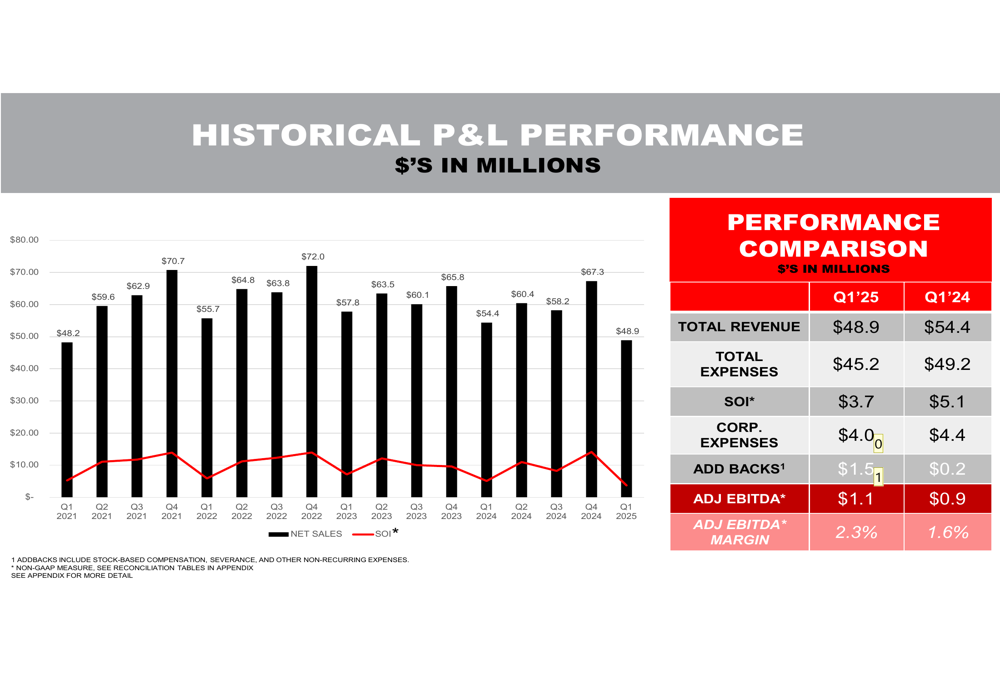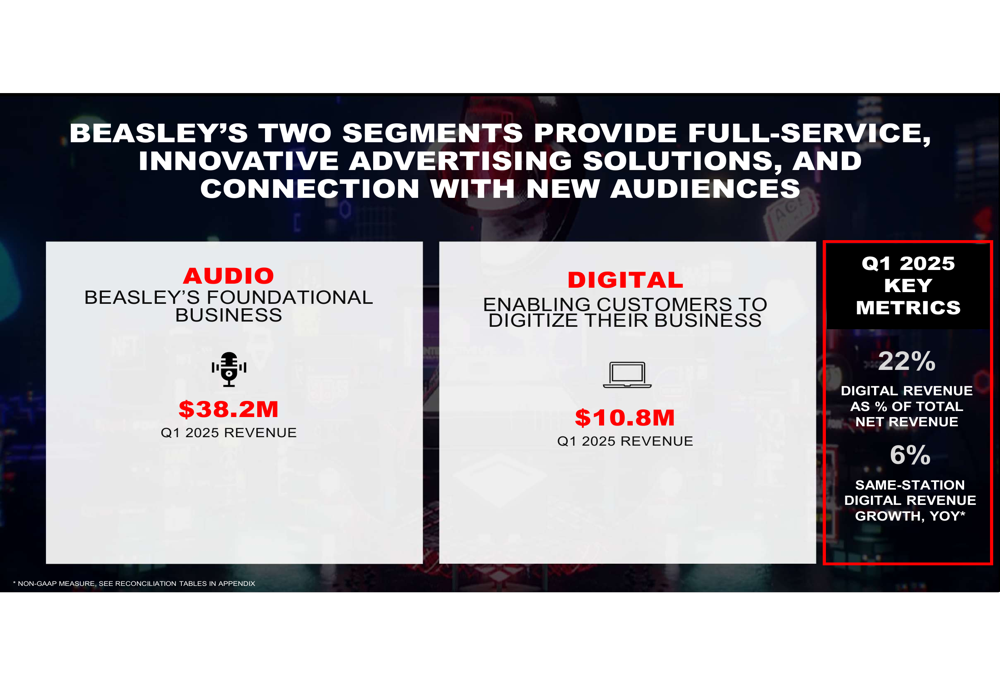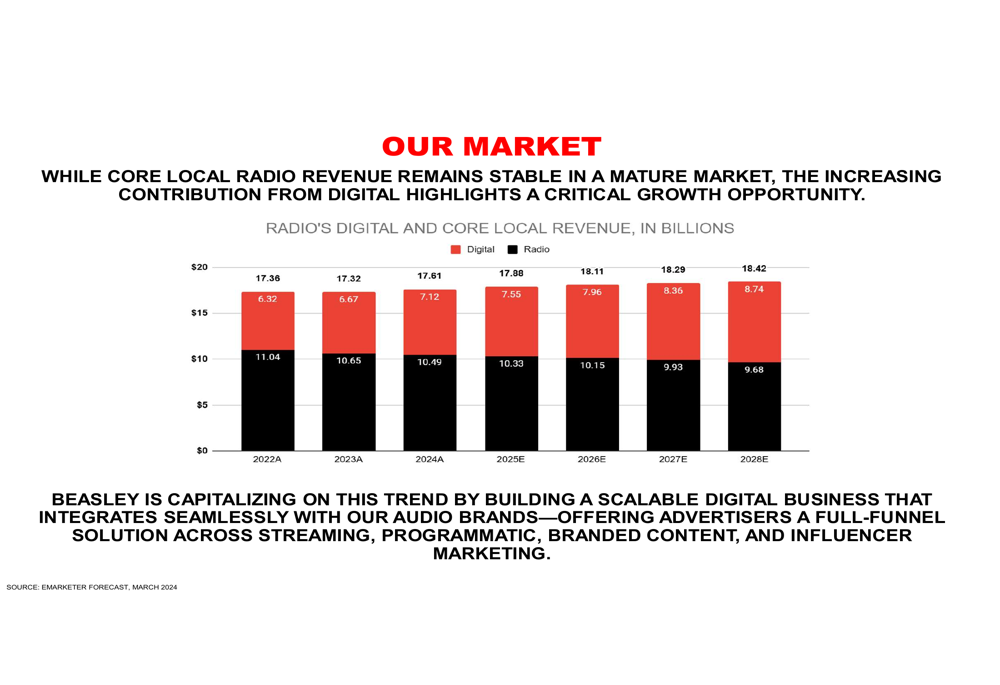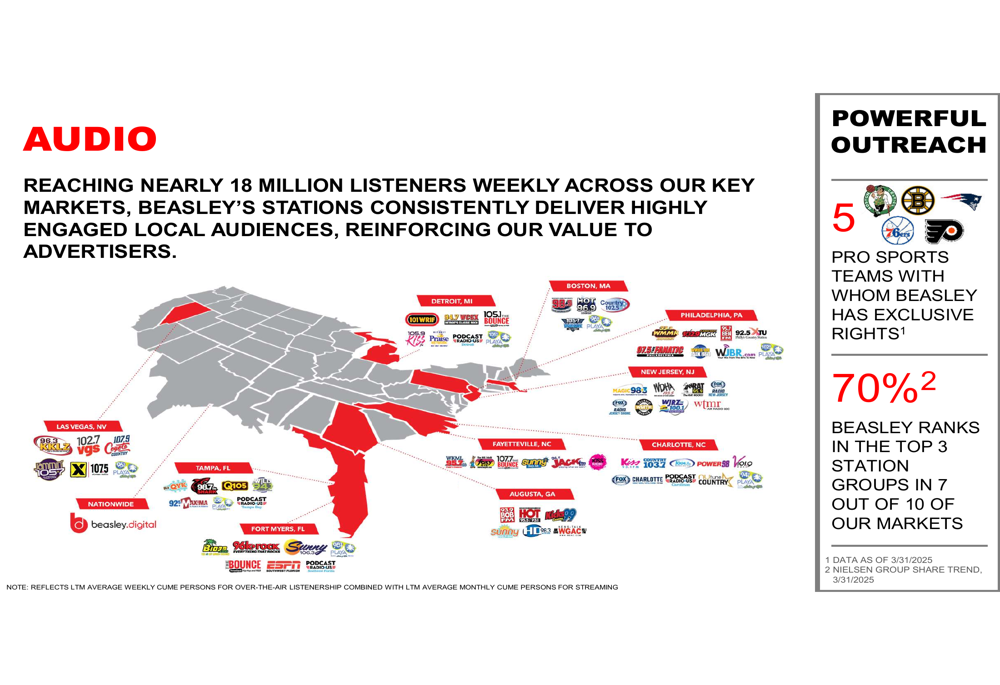IREN proposes $875 million convertible notes offering due 2031
Introduction & Market Context
Beasley Broadcast Group (NASDAQ:BBGI) presented its Q1 2025 financial results on May 7, 2025, highlighting the company’s continued digital transformation amid challenges in traditional radio. The presentation revealed a year-over-year revenue decline but improved profitability margins as the company continues to execute its digital growth strategy.
Beasley’s stock closed at $5.69 on the day of the presentation, near its 52-week low of $4.80, reflecting ongoing investor concerns about the radio industry’s transformation. In after-hours trading, the stock declined an additional 3.28% to $5.30, suggesting the market’s cautious reaction to the results.
Quarterly Performance Highlights
Beasley reported total net revenue of $48.9 million for Q1 2025, a decrease from $54.4 million in Q1 2024. Despite this revenue decline, the company managed to improve its adjusted EBITDA to $1.1 million (2.3% margin) compared to $0.9 million (1.6% margin) in the same period last year.
As shown in the following performance summary from the presentation:

The company’s Station Operating Income (SOI) was $3.7 million, down from $5.1 million in Q1 2024. Corporate G&A expenses decreased to $4.0 million from $4.4 million, including $0.5 million in severance and one-time expenses. Capital expenditures were modest at $0.8 million, reflecting disciplined spending.
The historical performance comparison provides additional context for the company’s financial trajectory:

Digital Growth Strategy
Digital revenue has become an increasingly important component of Beasley’s business model, now representing 22% of total net revenue at $10.8 million for Q1 2025. The company reported same-station digital revenue growth of 6% year-over-year, demonstrating momentum in this strategic area.
The company’s audio business, which remains its foundation, generated $38.2 million in revenue during the quarter:

This digital transformation aligns with broader industry trends, as illustrated in the company’s market analysis showing digital revenue growth projections through 2028, while traditional radio revenue is expected to gradually decline:

Beasley’s digital revenue has shown consistent growth over recent years, as demonstrated in the quarterly trend analysis:

Revenue Mix and Market Position
Beasley maintains a diverse revenue mix across different advertiser types and categories. Local advertisers represent the largest portion at 71% of revenue, followed by national advertisers at 16% and other sources at 14%:

By industry category, entertainment leads at 30% of revenue, followed by consumer services at 27%, automotive at 15%, retail at 10%, and other categories at 19%. This diversification helps mitigate risks associated with any single industry segment.
The company’s audio footprint spans 12 U.S. markets, reaching approximately 15 million weekly listeners through its AM/FM stations, complemented by 3.1 million monthly podcast downloads and 2.6 million unique streamers:

Financial Position and Outlook
Beasley’s balance sheet showed some changes compared to the previous quarter. Cash and cash equivalents decreased to $12.2 million from $13.8 million at the end of Q4 2024. Working capital declined more significantly to $8.1 million from $16.3 million. The company maintained its principal outstanding debt at $220 million, unchanged from the previous quarter.
This financial position comes as Beasley continues to navigate the transition from traditional radio to a more digitally-focused media company. The decline in working capital may raise some concerns about liquidity, though the stable debt level suggests the company is maintaining its deleveraging discipline.
The company’s audience reach remains substantial, providing a foundation for future growth as it continues to develop its digital capabilities:

Looking ahead, Beasley appears focused on operational efficiency in its core radio business while expanding its digital capabilities. This strategy aligns with the company’s previous guidance that digital initiatives would drive approximately 50% of new business, though the overall revenue decline suggests challenges remain in executing this transition while maintaining top-line growth.
Full presentation:
This article was generated with the support of AI and reviewed by an editor. For more information see our T&C.
